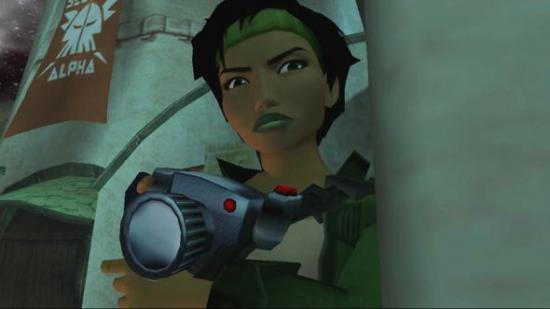Sometimes you can work out how far along a game is just by observing the demeanour of its developers. Watch Michel Ancel gush about Beyond Good & Evil 2 and it’s clear the game he’s directing is only now entering production. Far from the feature lockdown and excruciating trade-offs of beta, right now it’s a big ball of potential – and the giddiness of its creator is palpable.
Here’s everything we know about Beyond Good & Evil 2’s story, setting, and more.
Ancel says Beyond Good & Evil 2 is going to have planets, and outer space, and spaceships. It’s going to have smaller ships that go inside those spaceships, and huge procedurally generated cities, and a monkey who swears a lot. It’s a maximalist sequel that fills in the gaps between everything its predecessor attempted to do. Which makes it all the more important that the game, for all its ambition, is able to find focus.
To that end, Beyond Good & Evil 2 is also going to have a camera. It might be small, but it’s everything.
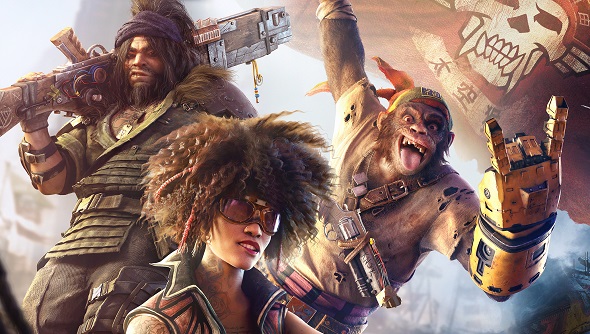
Third-person action games rarely incentivise slowing down. Their levels are usually taken at a jog, with the option to break into a sprint should that prove too pedestrian. In fact, even Dead Space was redesigned at the last minute to accommodate a faster run speed – developers Visceral altering everything from memory management to the size of rooms after a round of focus testing. They believed that if they hadn’t changed pace the series wouldn’t have caught on in the same way.
Yet it would be insulting to say that third-person environments don’t deserve to be lingered in. If you’ve ever loitered around one of L.A. Noire’s diners, you’ll have spotted the most absurd details: plates piled with minutely-textured, half-eaten pieces of toast and displaced baked beans. Time and again, artists have proven they’re willing to pack frankly ludicrous levels of granularity into worlds players will only ever see over somebody else’s shoulder.
In the first Beyond Good & Evil, Jade’s camera – a chunky VP-H263 model with 15.8 megapixels and a handgrip down the side – forced you to slow down. Let’s not forget that, in that game, saving the world was a hobby. The day job was taking wildlife photos for the Science Center: essential research work to fund the pearl detectors that would, eventually, pay your way into space. If you wanted to finish the game with more than the barest gadgets at your disposal, you had to take photos. And to do that, you had to consider the possibility that there might be more to the room in front of you – more than the fight or puzzle at hand.
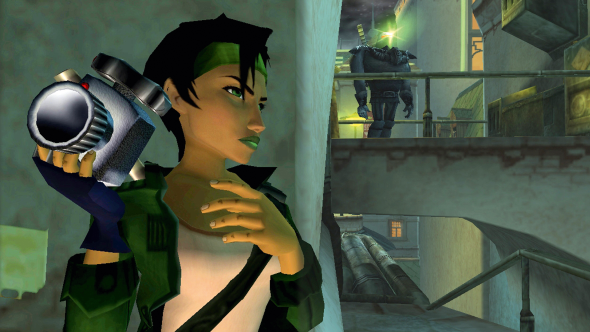
One of Ancel’s defining characteristics is a fondness for nature – he says all of his games have started with “old trees,” from Rayman to Wild. This passion shines through in the photo opportunities of Beyond Good & Evil: A pair of fuzzy, subterranean amoeba who shrink before Jade’s gaze. The shaggy dog sleeping in an alcove of a lighthouse. Planaria Rupestris, a glowing eel which will only emerge if you give a nearby power station a kick, plunging its mineshaft habitat into darkness.
All of Ancel’s creatures have Cod Latin names, which contribute to the sense of Darwinian exploration. And what little we’ve seen of Beyond Good & Evil 2 suggests a similar appreciation for the little things of the world, in all their variety and strangeness. The E3 trailer ended, of course, with a huge ship setting course for the stars, but it began with the seasoning on a pig’s dumplings in a cramped restaurant.
That’s not all the camera is for, though. Beyond the biology fieldwork, it’s also Beyond Good & Evil’s most potent symbol – a tool that allows Jade to hold power to account.
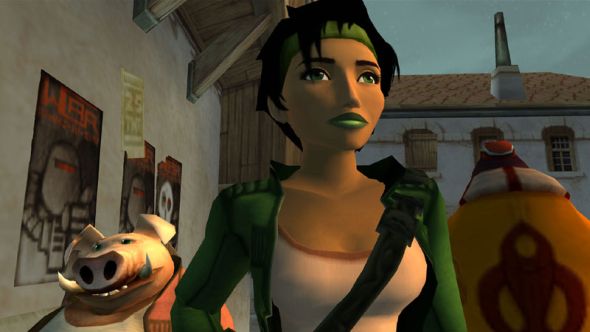
Beyond Good & Evil was released in 2003, and was influenced by the climate of fear that followed 9/11. Its central city of Hillys – a future-European amalgam that sees Ubisoft Montpellier’s rural France spliced with the waterways of Venice – depicts a society under strain. Devastated by off-planet attacks and the threat of alien invasion, the citizens of Hillys have allowed themselves to become subjects to a military dictatorship. The bulk of the game finds you working secretly with Hillys’ mayor to expose the wrongdoing of the planet’s supposed protectors and provide an alternative to the propaganda.
Beyond Good & Evil didn’t really have a central mechanic. Instead, it picked up elements like stealth, puzzles, and racing, and dropped them just as quickly. Through it all, however, your key objectives would be to snap incriminating photos – the evidence of deception that could change the tide of public opinion.
The sequel appears to have the same priorities, already revealing darker undertones of slavery, human trafficking, and a hierarchy between animals.
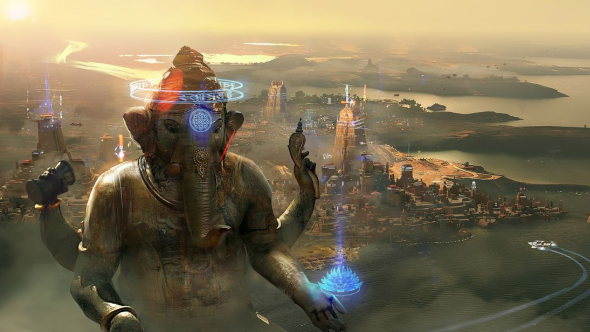
“If I’m taking a picture of evidence of the things I’m seeing in the game, I can share those pictures with the guys in the city,” Ancel says in his demo commentary. “I can trigger discussions based on the picture I took.”
It’s a detail that was understandably lost beneath the roar of the spaceships. But it speaks to the kind of games these are. Although there’s a fair amount of bashing enemies around in Beyond Good & Evil, it’s fundamentally a game about photojournalism and the fourth estate – and that oversized lens is a crucial way of holding the establishment to account.
Or it’s a game about snapping polaroids of cute bugs. After all, as Ancel says: “When you are doing such big games, it’s very important not to forget about characters, about humanity. Very simple and tiny things.”
